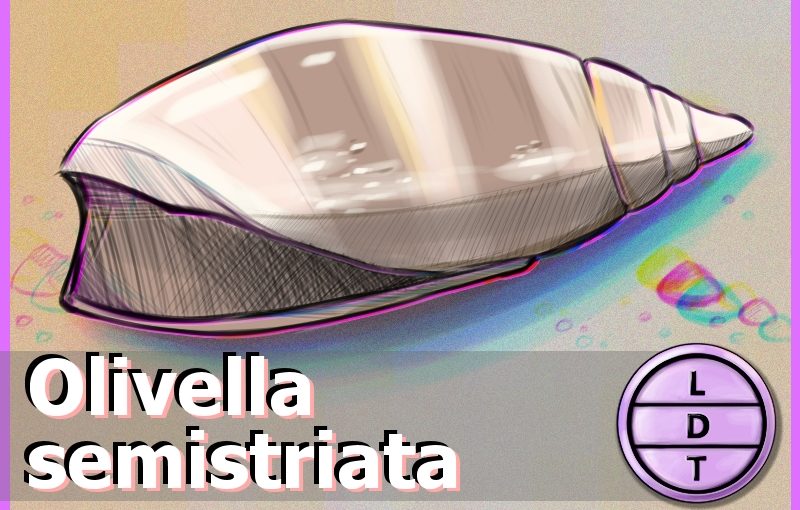“Today we’re talking about an aquatic olive garden. But more on that later…”
The sun, surf, and gentle sound of waves crashing against the sandy shores may bring to mind a welcome respite from daily life. But as with human surfers, the beach is life for some tidal animals. There’s a whole world of creatures living and dying in the swash and backwash of the briny tide, where the land meets the sea. But learning to live in this unique ecosystem is how one snail makes its way in Life, Death, and Taxonomy.
Measure Up
Welcome to the beloved Measure Up segment. The official listener’s favorite part of the show! The part of the show when we present the animal’s size and dimension in relatable terms through a quiz that’s fun for the whole family. It’s also the part of the show that’s introduced by you when you send in audio of yourself saying, singing, or chittering the words measure up into ldtaxonomy at gmail dot com. We have a new measure up intro from Henry!
Length
- 10–12 mm
- 10 mm (0.3 inches)
- How many olive snails go into the length of the largest surfboard?
- The surfboard was made in Huntington Beach, CA, and was ridden by 66 people in a demonstration.
- Answer: 1,280 snails. The board was 42 feet.
Superfamily Size
- The superfamily olividae has five genera.
- How many olividae sized going into the amount of olives it takes to make a liter of olive oil?
- Hint: Extra virgin olive oil is produced with 6 kilograms of olives.
- Answer: 1600. It takes about 8000 olives.
Fast Facts
- They live on sheltered beaches with calm waves.
- Their range is the American west coast from the Gulf of California (which isn’t in California at all) all the way down to Peru
Major Fact
Olive snails, like other snails, utilize viscous mucous for a lot of different purposes.
- All snails are covered in a slimy mucous that helps them slide across surfaces.
That’s not all she does with this snail snot sail.
- Olive snails are what is called a suspension feeder, which means they get nutrients from particles floating around in the water.
- Crabs and shrimp and other bottom feeders usually do this too.
- To do this, the olive snail buries its shell and body in the ground and extends two appendages that extend out of their propodiums, which is the outer part of a snail’s foot.
- As they extend their appendages, mucus from their body creates a net that gathers up passing sediment.
- When they’ve got a good haul, they pull in the snotty net full of sand and nutrients.
Olive snails also use their mucous for more sophisticated locomotion.
- When an olive snail is finished with an area of the beach, or if they need to make a quick getaway, they spread their wings and fly… kind of.
- Olive snails have two flaps that she tucks against their sides as they crawl around.
- When they dig, these flaps are pulled over the front part of the shell to sort of grease their path through the sand tunnel.
- However, they can also flip onto their backs and fan out the flaps into an umbrella shape to catch the surf.
- This allows them to quickly glide to new feeding areas.
- Many species of tidal snails are able to surf in different ways, using a part of their foot.
Ending: So put on your mucous wiggle sock, ride the ocean waves using your foot as an underwater sail, and don’t forget to deploy your mucous nets when feeding like the Olivella Semistriata here in LDT
Hey, LDT Listeners, in case you haven’t heard. We have merch available for purchase at Teespring.com/stores/taxonomytees. But if a worldwide pandemic doesn’t have you prioritizing podcast merch, you can still support us by leaving a review on your favorite podcast app for absolutely free. Either way, we’re glad to have you here! Thanks for listening!

